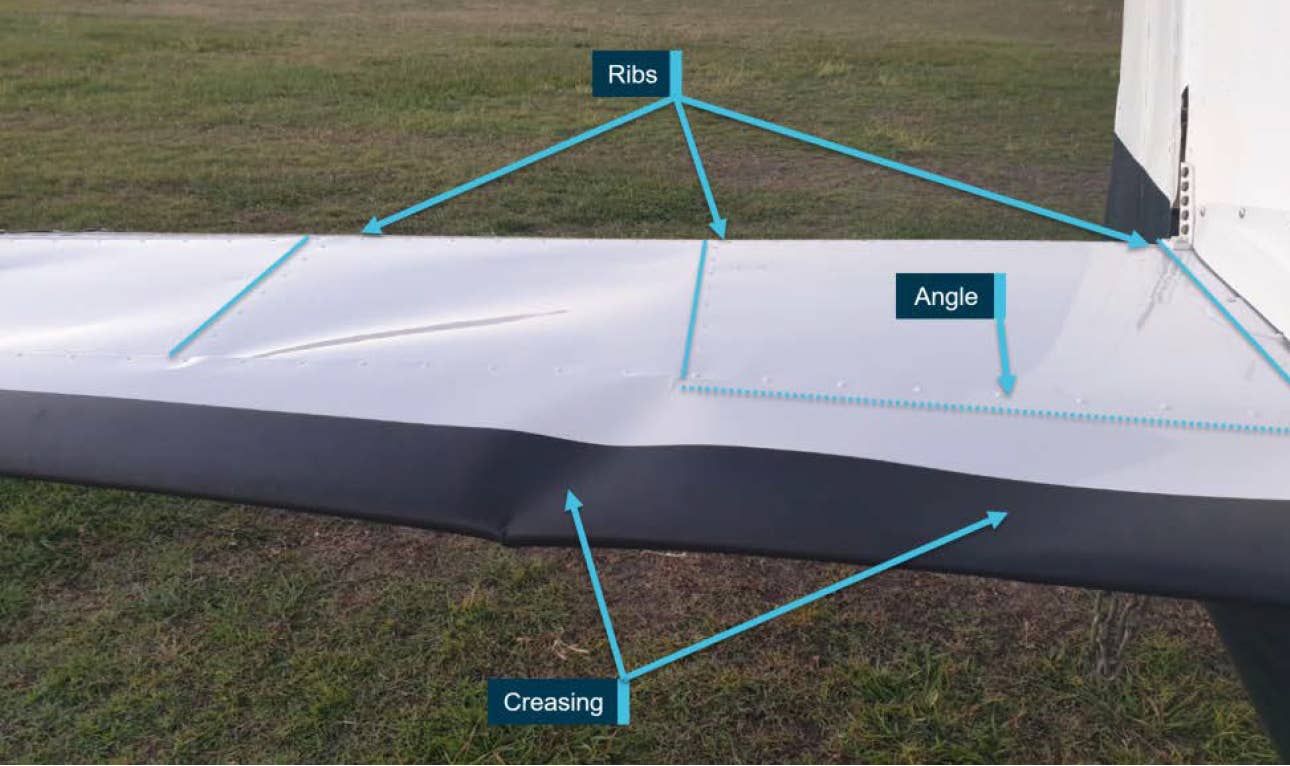
This closeup shows the severe damage to the Cessna 152’s right horizontal stabilizer. Courtesy ASTB
The Australian Transport Safety Board (ATSB) said in May 2019 a relatively new flight instructor managed to wrestle control of a Cessna 152 away from a student pilot at just 400 feet agl after the aircraft abruptly pitched down into a steep dive at 2,000 feet agl. The instructor sustained minor injuries while the student was uninjured. The flight instructor and student terminated the lesson after recovering from the dive.
A post incident examination of the aircraft by the ATSB, “identified significant structural damage to the right horizontal stabilizer, indicative of in-flight overload during the dive recovery. In addition, the instructor inadvertently bent the throttle control in the cockpit, which made movement of the control stiff but still operable.”
The instructor had been demonstrating the use of the Cessna’s trim control to the student shortly after departing Archerfield Airport, Queensland, Australia, by moving the trim wheel from a nose up to a nose down position so the student could feel the pressure on the control wheel. The ATSB reported that with the aircraft trimmed nose-up, “the student practiced re-trimming the aircraft for level flight while maintaining attitude using nose-down pressure on the control wheel. With the student flying, the instructor then moved the pitch trim to about two-thirds travel nose down. The student maintained attitude with nose-up pressure on the control wheel.” As the new pilot was practicing the maneuver, “the instructor’s feet were resting lightly on the rudder pedals, left hand on their leg, and right hand resting on the glareshield.”
When the procedure called for the student to return the elevator trim to neutral from the nose-down position the instructor had placed it in, “the student became confused about the correct procedure and let go of the control wheel.” The aircraft quickly pitched nose-down, rolled left and entered a dive. “The incident was violent enough that the flight instructor’s headset dislodged from their head.”
Adding to the severity of the incident, the ATSB determined that the “instructor’s hands were not in a ready position to take control in the event of any mishandling by the student pilot. The recovery by the instructor was likely further delayed after sustaining a head injury during the in-flight upset, and initially being unsure about what had happened and how to then recover the aircraft. The instructor attempted to regain control of the aircraft before placing the elevator trim into a neutral position, leading to the aerodynamic force being concentrated on the right horizontal stabilizer (where the trim tab was located) rather than spread across both stabilizers during the dive recovery.”
“The instructor recalled applying right rudder during the recovery but did not fully recollect if that was to recover from a left spiral dive or spin. The instructor stated they did not re-trim the elevator system to a neutral position until after recovery from the dive. When they had recovered from the dive, the aircraft was on a reciprocal heading. The instructor carried out a flight control function check and confirmed the aircraft was controllable.”
The ATSB said, “These asymmetric flight loads, induced by the elevator trim imparting additional load on the right side, twisted the stabiliser at the forward outboard tip, about 30 mm downwards relative to its original position. This likely resulted in the right stabiliser being close to total failure.” The 152 landed safely back at Archerfield a few minutes after the instructor recovered the airplane.

Sign-up for newsletters & special offers!
Get the latest FLYING stories & special offers delivered directly to your inbox






